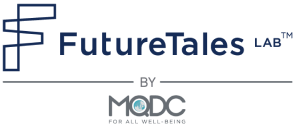
Home Nutrition and Medicine Machines
ARTICLES | Jul 07, 2023
Half the world's population lack access to essential healthcare. Nearly 2 billion people have limited access to primary medicine. Statistically, people aged 65+ take about 7 pills a day. Almost all biopharmaceutical executives see people-driven as the future of healthcare. Individuals will pay more attention to their healthcare. Healthcare will also change to become preventive, personalized, digital, integrated into daily life, and enabled by new regulatory, organizational policies, and business models.
The concept of drug manufacturing and personalized treatment plans is becoming increasingly popular based on biological and genetic traits and a person's lifestyle and habitat. The precision medicine market is expected to reach $126 billion by 2025, with the shift leading to a 17% cost savings in drug development, allowing the global pharmaceutical industry to save up to $26 billion per year in costs.
Technological advancement, economic forces, and people's demand have become essential factors in developing equipment or devices for non-invasive health monitoring. The idea has also developed to create a home-grown nutrient and drug machine to help people properly care for their health based on lifestyle data obtained from wearable devices such as Smart Watches, along with user genetic data to determine nutritional, drugs, and supplements needs and producing personalized products with 3D printing machine. This concept will foster remote diagnosis and treatment, another emerging sector in healthcare, rising 26% per year from 2021 to 2030. Moreover, it will encourage the pharmaceutical industry to focus on manufacturing home equipment and raw materials. According to the Dubai Future Foundation, a home-based personalized health monitoring and drug manufacturing machine could become commercialized by 2050.
Implications for the future:
- Home-based 3D printing of nutrition and medicine will encourage preventive medicine and make early-stage diagnosis and treatment more convenient. Ongoing nutrition and health condition monitoring will enhance preventive health care and make remote treatment easier and more accurate.
- Inequality can cause people to have unequal access to technology. If self-diagnostic technology and private home-based food and medicine-producing machine are popular, the government should provide similar equipment in hospitals or health facilities. Alternatively, human healthcare professionals may enhance health check-ups and food prescribing services for low-income people to bridge the health care gap between the rich and the poor.
Sources
Read more articles on the future of lifestyle and health at https://web.facebook.com/FutureTalesLABbyMQDC/ and https://www.blockdit.com/futuretaleslab











